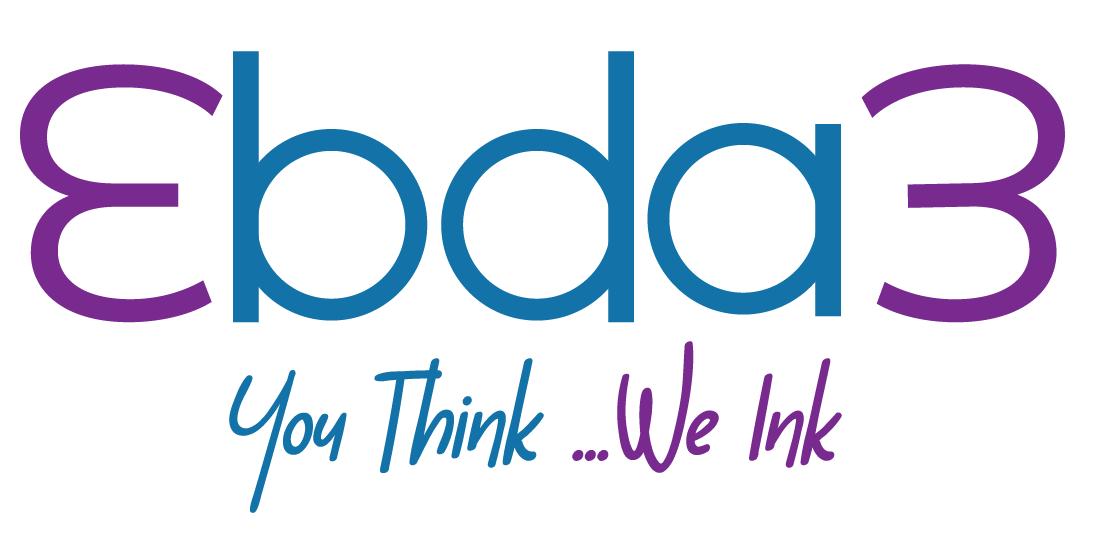Crafting High-Quality Whitepapers and eBooks

1. Choose the Right Topic
Select a topic that is relevant to your audience and aligns with your business objectives. Consider what issues your audience faces and how your whitepaper or eBook can provide solutions or insights.
2. Conduct Thorough Research
Gather data from credible sources to support your content. Accurate and well-researched information enhances the credibility of your whitepaper or eBook. Include statistics, case studies, and expert opinions to add depth.
3. Create an Outline
Develop a detailed outline before you start writing. An outline helps organize your thoughts and ensures that your content flows logically. Include sections such as an introduction, main body, and conclusion.
4. Write with Clarity and Precision
Your writing should be clear, concise, and free of jargon. Use a formal tone for whitepapers and a more conversational tone for eBooks. Break down complex information into easily digestible sections.
5. Design for Readability
A visually appealing design enhances the readability of your whitepaper or eBook. Use headings, subheadings, bullet points, and visuals to break up text and make the content more engaging. Ensure that your design aligns with your brand identity.
6. Include Visuals
Incorporate charts, graphs, images, and infographics to illustrate key points. Visuals not only make the content more engaging but also help explain complex information more effectively.
7. Provide Actionable Insights
Offer practical advice and actionable insights that your audience can apply. Summarize key takeaways and provide clear recommendations. This adds value to your content and helps establish your expertise.
8. Edit and Proofread
Thoroughly edit and proofread your content to eliminate errors and ensure clarity. Consider having multiple rounds of editing and seek feedback from colleagues or industry experts.
9. Optimize for SEO
Incorporate relevant keywords naturally throughout your content to improve search engine visibility. Use a compelling title and meta description to attract organic traffic.
10. Create a Compelling Call to Action
Include a clear call to action (CTA) at the end of your whitepaper or eBook. Encourage readers to take the next step, whether it’s downloading another resource, signing up for a newsletter, or contacting your sales team.
Promoting Your Whitepapers and eBooks
1. Leverage Your Website
Feature your whitepapers and eBooks prominently on your website. Use landing pages with persuasive copy and a clear CTA to encourage downloads.
2. Use Email Marketing
Promote your resources through email marketing campaigns. Segment your audience and tailor your emails to specific interests to increase engagement.
3. Share on Social Media
Promote your whitepapers and eBooks on social media platforms. Create eye-catching posts with brief descriptions and links to your landing pages.
4. Collaborate with Influencers
Partner with industry influencers to promote your content. Their endorsement can help expand your reach and enhance credibility.
5. Utilize Paid Advertising
Invest in paid advertising, such as Google Ads or social media ads, to reach a broader audience. Target specific demographics to maximize ROI.
Whitepapers and eBooks are powerful tools for generating leads, educating your audience, and showcasing your expertise. By following these steps, you can create high-quality, engaging resources that add value to your audience and support your business objectives.
Developing a Comprehensive Content Marketing Strategy
In today’s digital age, content marketing has become a critical component of successful business strategies. A well-crafted content marketing strategy not only helps in building brand awareness but also drives traffic, generates leads, and enhances customer engagement. This guide will walk you through the steps of creating a content marketing strategy that aligns with your business goals and addresses your audience’s needs.
Understanding Content Marketing
Content marketing involves creating and sharing valuable, relevant, and consistent content to attract and retain a clearly defined audience. The ultimate goal is to drive profitable customer actions, such as making a purchase, subscribing to a service, or sharing the content with others.
Steps to Develop a Comprehensive Content Marketing Strategy
1. Define Your Goals:
– Set Clear Objectives: Identify what you want to achieve with your content marketing efforts. Common goals include increasing brand awareness, generating leads, boosting sales, improving customer retention, and enhancing customer engagement.
– Align with Business Goals: Ensure that your content marketing goals are aligned with your overall business objectives. This alignment will help you measure the success of your strategy more effectively.
2. Understand Your Audience:
– Create Buyer Personas: Develop detailed profiles of your ideal customers, including demographics, interests, pain points, and purchasing behavior. This will help you tailor your content to meet their specific needs.
– Conduct Audience Research: Use surveys, social media analytics, and website data to gain insights into your audience’s preferences and behavior.
3. Perform a Content Audit:
– Evaluate Existing Content: Review your current content to identify what’s working and what’s not. Look at metrics such as engagement rates, conversion rates, and SEO performance.
– Identify Gaps: Determine what content is missing or underperforming and identify opportunities for new content that can address your audience’s needs.
4. Develop a Content Plan:
– Content Types: Decide on the types of content you will create, such as blog posts, videos, infographics, case studies, whitepapers, and social media posts.
– Content Themes: Identify key themes and topics that align with your business goals and audience interests. This ensures your content remains focused and relevant.
– Content Calendar: Create a content calendar to plan and schedule your content. This helps in maintaining consistency and ensures timely delivery of content.
5. Create High-Quality Content:
– Focus on Value: Ensure your content provides real value to your audience. It should educate, entertain, or solve a problem.
– Maintain Quality: High-quality content is well-researched, well-written, and visually appealing. Pay attention to grammar, formatting, and design.
– SEO Optimization: Optimize your content for search engines by using relevant keywords, meta descriptions, and internal linking. This will help improve your content’s visibility and reach.
6. Distribute Your Content:
– Choose the Right Channels: Identify the platforms where your audience is most active. This could include your website, social media, email newsletters, and third-party sites.
– Promote Your Content: Use social media, email marketing, and paid advertising to promote your content. Engage with your audience through comments, shares, and discussions to amplify your reach.
7. Measure and Analyze Performance:
– Track Key Metrics: Monitor metrics such as website traffic, engagement rates, conversion rates, and return on investment (ROI) to assess the performance of your content.
– Use Analytics Tools: Utilize tools like Google Analytics, social media insights, and marketing automation software to gather data and gain insights.
– Adjust Your Strategy: Based on your analysis, refine your content marketing strategy. Focus on what’s working and make improvements where necessary.
8. Continuous Improvement:
– Stay Updated: Keep up with the latest trends and best practices in content marketing. Adapt your strategy to stay relevant and competitive.
– Experiment and Innovate: Don’t be afraid to try new content formats, topics, and distribution channels. Innovation can help you stand out and keep your audience engaged.
Conclusion
Developing a comprehensive content marketing strategy is essential for achieving your business goals and meeting your audience’s needs. By setting clear objectives, understanding your audience, performing a content audit, creating a content plan, producing high-quality content, distributing it effectively, measuring performance, and continuously improving, you can build a successful content marketing strategy. This approach will not only enhance your brand’s visibility and credibility but also drive growth and foster long-term customer relationships.
Crafting an effective video script is essential for creating engaging and impactful content across various platforms. Whether you’re producing promotional videos, educational content, or storytelling pieces, here are some tips to help you write compelling video scripts:
1. Understand Your Audience: Before you start writing, define your target audience. Consider their demographics, interests, and pain points. Tailor your script to resonate with your audience’s needs and preferences.
2. Define Your Message: Clearly outline the main message or key takeaway you want to convey through the video. Keep it focused and ensure that every element of your script supports this central idea.
3. Start with a Hook: Capture your audience’s attention right from the start. Open with a compelling hook—a question, a surprising fact, or a relatable scenario—that draws viewers in and makes them want to keep watching.
4. Tell a Story: Use storytelling techniques to make your script more engaging. Structure your video around a narrative arc with a beginning (introduction), middle (development of ideas), and end (resolution or call to action). Stories create emotional connections and keep viewers interested.
5. Keep it Concise: Attention spans are short, so aim to deliver your message succinctly. Avoid unnecessary details or filler content. Every word should serve a purpose and contribute to moving the story forward.
6. Use Conversational Language: Write your script in a conversational tone that resonates with your audience. Avoid jargon or complex language that might alienate viewers. Speak directly to your audience as if you’re having a conversation with them.
7. Visualize the Scenes: Since videos are a visual medium, incorporate visual descriptions into your script. Describe the settings, actions, and emotions to help your production team understand how to bring your script to life visually.
8. Include Calls to Action (CTAs): If your video aims to drive action (such as subscribing, visiting a website, or making a purchase), include clear and compelling CTAs throughout the script. Make it easy for viewers to know what steps to take next.
9. Consider Pace and Timing: Pay attention to the pace of your script. Balance slower moments for emotional impact with faster-paced sections to maintain energy. Also, consider the timing of dialogue and visuals to create a seamless flow.
10. Revise and Refine: After writing your script, revise it multiple times. Remove unnecessary elements, refine the language for clarity and impact, and ensure that the script aligns with your video production goals and objectives.





